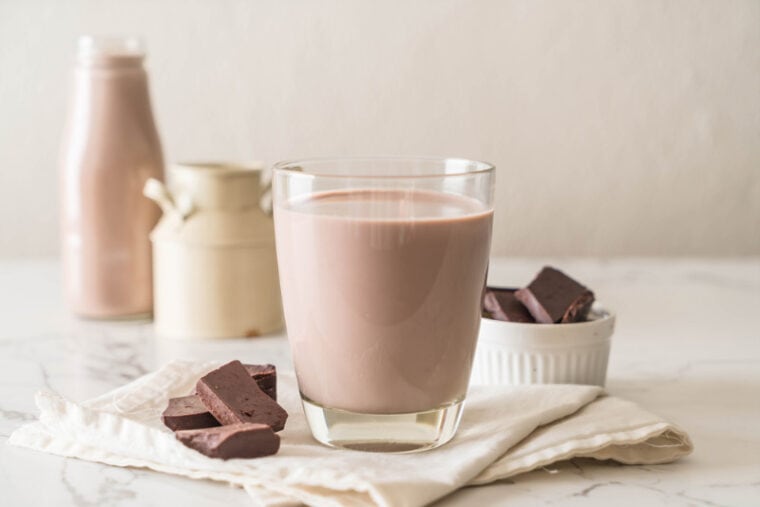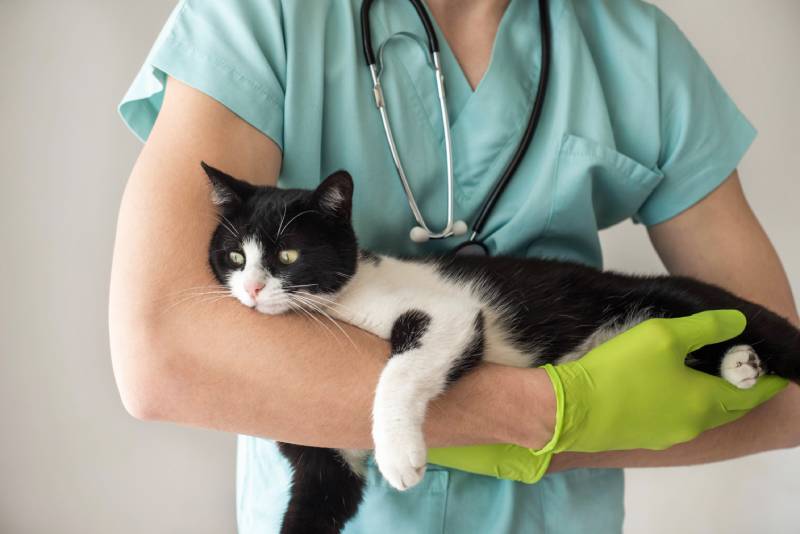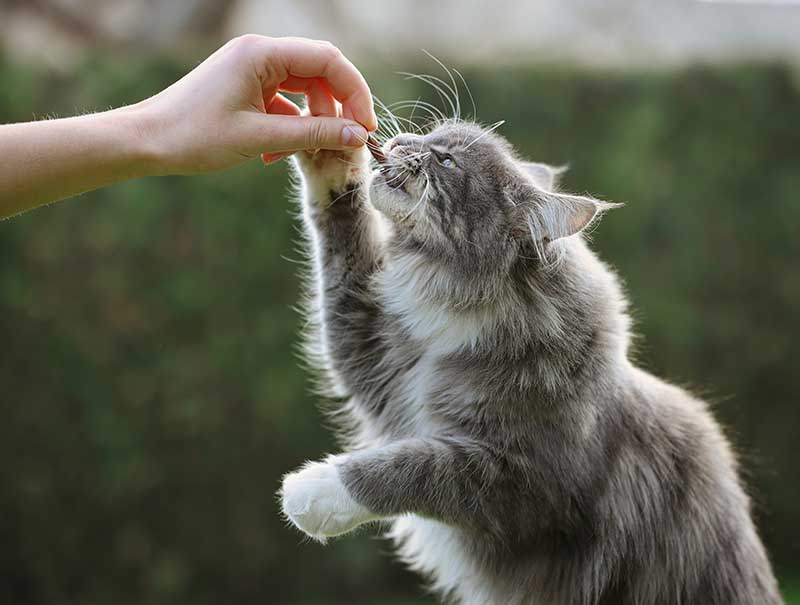
Click to Skip Ahead
Cats are entertaining pets with many strange habits, and as pet owners, we often wonder what is safe to feed them. You may have heard that many cats like milk and wonder if it’s safe to feed them chocolate milk. Unfortunately, cats should avoid chocolate milk because it is unhealthy for them to consume. Keep reading as we list the possible dangers and share safe alternatives and other interesting facts to help you be better informed.
Dangers of Feeding Chocolate Milk to a Cat
Theobromine
Chocolate is harmful to cats due to a substance it contains called theobromine. The signs of chocolate poisoning include vomiting,1 diarrhea and increased drinking and urination. Theobromine can also cause agitation and restlessness and in severe cases an increased heart rate, tremors and seizures. Very rarely it can even be fatal.
Theobromine Levels in Different Chocolate Types
The level of theobromine varies in different types of chocolate. Dark chocolate contains the highest concentration of theobromine, followed by milk chocolate, while white chocolate has the least.
Note that cocoa powder is especially toxic because it contains a high concentration of theobromine. If you are making chocolate milk at home using cocoa powder you must be especially careful to keep it well away from your curious kitty. In general for commercial chocolate milks the chocolate is already diluted and so it would take larger amounts to make your cat seriously unwell. However cats should avoid all forms of chocolate.

Caffeine
Chocolate also contains smaller amounts of caffeine, another potentially harmful ingredient. Cats are more sensitive to the effects of caffeine than us humans and it can cause their heart rate to increase and cause them to be hyperactive, jittery and restless.
Caffeine Levels in Different Chocolate Types
Like theobromine, the caffeine level will be higher in darker chocolate, with white chocolate containing none. The levels in chocolate milk are usually relatively low but it is recommended that cats do not ingest any caffeine so it’s another reason to avoid your cat having any chocolate milk.
Lactose
While it’s a stereotypical practice to leave out milk for cats, many felines become lactose intolerant once they are a few months old, as they lose the enzyme that they need to digest it. Consuming milk of any kind, including chocolate, can lead to an upset stomach and signs such as vomiting and diarrhea.

Sugar
Another problem with feeding chocolate milk to your cat is that it can contain a large amount of sugar. Since cats can’t taste sweet things, and sugar can lead to upset tummies and weight gain, there’s no reason for it to be in their diet.
Artificial Sweeteners
Certain brands of chocolate milk try to reduce the number of calories by using an artificial sweetener, but these are also not ideal for your kitty. While cats seem to tolerate these sweeteners better than dogs, it’s still better to avoid them until more studies are done.
Benefits of Feeding Chocolate Milk to a Cat
There are no benefits to feeding chocolate milk to your cat, even if they are tolerant of milk they don’t need all that added sugar in their diet. Even though it is diluted the chocolate still contains both theobromine and caffeine and it is just not worth the risk. If your cat needs to be encouraged to drink more there are much better options to increase their fluid intake.
Signs That Your Cat Consumed Chocolate Milk
The most common sign your cat will show after consuming some chocolate milk is vomiting and diarrhea due to the lactose, sugar and fat content. A small amount is unlikely to result in signs of chocolate toxicity as the chocolate is diluted.
Ingestion of larger amounts or more concentrated products may cause signs of chocolate toxicity which as well as GI signs can cause restlessness, muscle tremors and an increased heart rate.

What Do I Do If My Cat Consumes Chocolate Milk?
Tips for Preventing Chocolate Milk Consumption
Alternatives to Chocolate Milk
Catnip
Catnip is a popular treat among cats that can induce temporary euphoria and excitement. Many cats enjoy playing with catnip-infused toys or consuming small amounts of dried catnip during playtime.

Commercial Cat Treats
A wide variety of commercial cat treats are safe and tasty for felines. Look for ones made from high-quality ingredients, and avoid those with artificial additives. Limiting the number of treats that you feed to your cat to less than 10% of their total calorie intake is also important to prevent weight gain.

Cooked Meat and Fish
Offer small amounts of cooked lean meat or fish as occasional treats. Avoid seasonings, bones, and any other ingredients that are harmful to cats or could create a choking hazard.
Kitten Milk
If you are hand rearing a kitten then you should feed them special kitten formula milk instead of cow’s milk (or milk from any other species). This is so it contains the right balance of nutrients for their growth and development.
Summary
Unfortunately, cats cannot consume chocolate milk due to the chocolate, lactose and high levels of sugar it contains. Cow’s milk in general is best avoided as most adult cats are lactose intolerant meaning that they are unable to digest it and can suffer from upset tummies after they drink it. While a few licks of chocolate milk are unlikely to cause an issue, if you are concerned about how much your cat has consumed, or they are showing any signs of being unwell you should contact your vet straight away for advice. There are many safer treats to give your cat which they will likely appreciate more!
See also:
- Can Kittens Drink Human Breast Milk? Vet Approved Facts & Safety Guide
- Can Cats Drink Goat Milk? Vet-Reviewed Facts & Safety Guide
Featured Image Credit: gowithstock, Shutterstock







